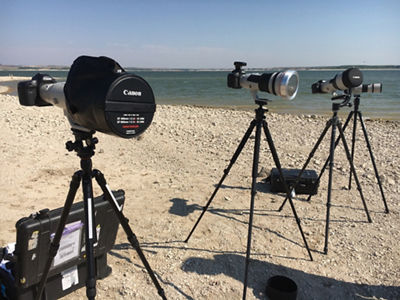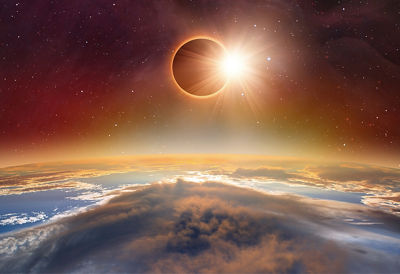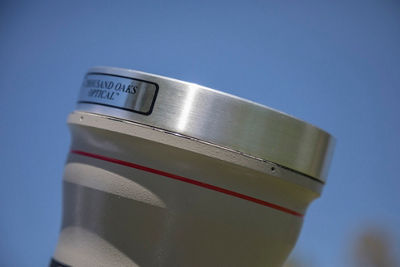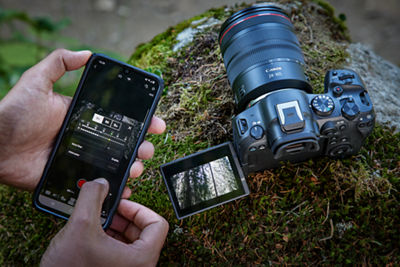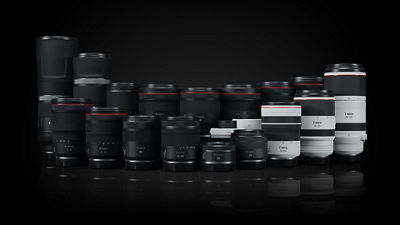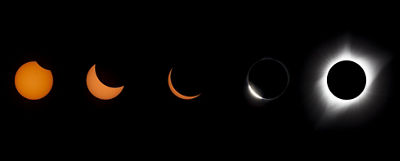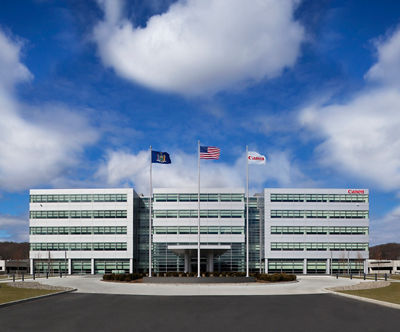North America will experience a breathtaking astronomical event on April 8, 2024 - a total eclipse of the sun. This is the second eclipse in the 21st century. The last was in 2017 and won’t happen again in North America until 2044. What makes this one different than the one in 2017 is the moon lies a bit closer to the earth making it a bit larger in the sky.
You don’t need to be a seasoned pro, anybody will be able to shoot this with the proper precautions, equipment, and techniques. Everyone from novice to professional photographers will be able to photograph it.
Many photographers use their tripods reluctantly. In the case of the upcoming total eclipse of the sun, it’s a must.
The eclipse is almost 2½ hours long and your arms will be exhausted if you don’t use one. Your images will also be sharper because most photographers will be using very long focal lengths to make large sun disk sizes.
Tripod Legs
Tripods come in many sizes and a couple of different leg materials. As long as it is a sufficiently strong tripod, it doesn’t matter if your tripod legs are made of aluminum or carbon fiber because you won’t be hiking with it during the eclipse.
If you’re into hiking and traveling, then you’ll probably consider a lighter weight carbon fiber model. You may even want to consider a tripod with four-section legs (versus a three-leg tripod) – four-leg section tripods fold up smaller and fit in suitcases easier and are often the same height as three-leg tripods when fully extended.
If you’re mostly shooting in a studio or location shooting without a lot of walking, then either will work.
The height of the tripod is another consideration. You’ll want a tripod that will at least come up to eye-level, without fully extending the center column, because your lens will be pointing almost straight up and you won’t want to hunch for over two hours if your LCD screen isn’t a vari-angle screen. Another option: Bring a lawn chair to sit on during the eclipse, and lower the tripod to your sitting eye-level position (the added benefit here is that your tripod is much more stable since it’s not fully extended).

Tripod Heads
More important than the type of legs you buy, it’s the tripod head that counts. And there are special considerations for the solar eclipse.
Unlike typical photography, you won’t be aiming your camera and lens more-or-less straight ahead. This is a morning to midday event in most of North America, and you will be aimed almost straight up to photograph the sun during this eclipse. That’s not something many tripod heads are designed to do, let alone with a large super-telephoto lens mounted.
As mentioned, the eclipse can last as long as a football or baseball game and will require you to be attentive every minute – because most tripod heads will require you to continually reposition the sun in the frame due to the rotation of the earth. Depending on the magnification of the sun disk, your camera and lens will need constant repositioning to keep the sun centered in the frame. At telephoto magnifications, the sun will drift one sun diameter every two minutes.
There are numerous head types. Some are more useful for eclipse photography than the others, but you’ll also want to consider its after-eclipse life.
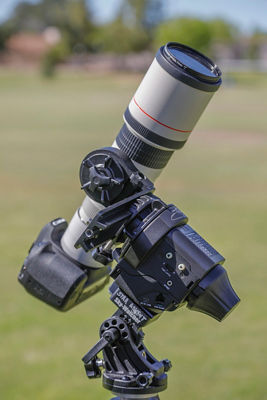
Astronomical Equatorial Head
A recent industry development is geared, electrical equatorial-type mounts (normally used on telescopes) that are re-designed to replace conventional tripod heads and be used with cameras. If you research these, be sure to look for equatorial drive heads optimized for camera use and engineered for the weight of the largest lens you’re likely to use on it.
In astrophotography, it keeps the sun, moon, or stars exactly in the same place in your frame — moving the camera and lens as the earth rotates — allowing for greater observation comfort by overcoming the constant need to reposition the camera every minute. With the sun, moon or stars exactly in the same place, longer time exposures can be made using slower ISOs and thereby dramatically reducing sensor noise.
For solar eclipse photographers, this means that once you initially position the sun in the center of your frame, the electrical equatorial mount will keep the sun exactly in the center of your frame for the entire eclipse, freeing you up to pay attention to distractions such as incoming clouds or removing and replacing the solar filter during totality.
Keeping the sun in the same spot in your frame is important and a camera-dedicated clock drive combined with your camera’s intervalometer capability means that you can shoot the entire eclipse almost hands-free. The only time you need to be at the camera is to remove and replace the solar filter during totality.
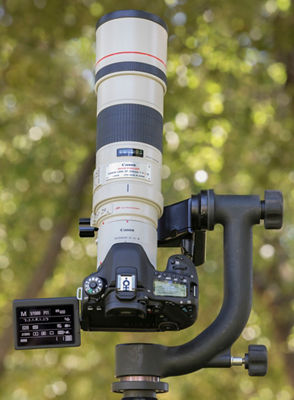
Gimbal Head
If you’re into wildlife and bird photography and you don’t have a head yet, you should consider the gimbal style head. It is very fast and flexible, but you will need to take precautions when mounting your lens on it, especially if you’re using a big white Canon L series lens for the eclipse. If you mount the lens with the vertical slider all the way down, the lens won’t be able to tilt up high enough to see the eclipse. Adjust the vertical slider at least halfway up and you’ll be able to angle the lens high enough to see the sun.
Also, make sure you orient the arm on the right side if you’re using a camera with a vari-angle LCD screen display. If it’s on the left side, it will interfere with the fold-out LCD screen.
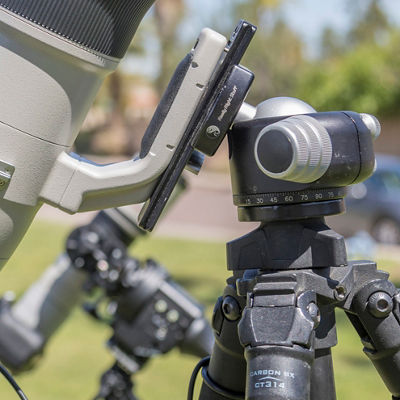
Ball and Socket Head
The ball and socket head is the most versatile for general photography and will give you the greatest flexibility in pointing your lens almost straight up to photograph the eclipse.
Video Head: The video tripod head may or may not be able to tilt back enough to allow you to point the lens straight up.
Three-Way Head: The three-way head, if used as designed, is probably the least useful for eclipse photography because most of them won’t allow you to tilt the camera back enough to include the sun. If you plan to use your existing one, consider using it backwards by having the “pitch” arm in front instead of pointing back towards you. It will be a bit awkward but will get the job done.
Tripod accessories
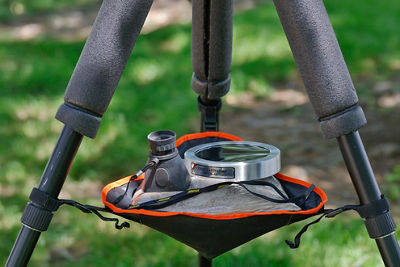
Tripod Apron
One very important accessory is a tripod apron, sometimes referred to as a utility apron, tripod tray, or stone bag. It’s hung between the legs of the tripod and is used as a catch-all during shooting.
During totality, it’s a fast and convenient place to temporarily store the solar filter. Everything is happening so fast, you don’t want to be fumbling with your solar filter. It can also be used to hold plastic bags full of sand or rocks to weigh down the tripod, if the tray and its mounts are sufficiently strong. The additional weight helps to stabilize the tripod and makes it less susceptible to vibration in wind.



